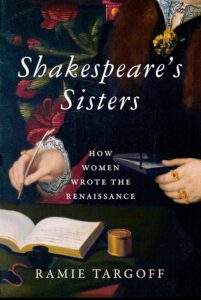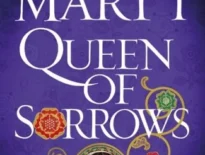 Author and historian Ramie Targoff will be in the UK next week speaking about her forthcoming book Shakespeare’s Sisters: Four Women who wrote the Renaissance.
Author and historian Ramie Targoff will be in the UK next week speaking about her forthcoming book Shakespeare’s Sisters: Four Women who wrote the Renaissance.
11th March - event with Warwick Books: https://www.ticketsource.co.uk/warwick-books
12th March - Waterstones Piccadilly in conversation with Claire van Kampen of The Globe: https://www.waterstones.com/events/ramie-targoff-in-conversation-with-claire-van-kampen-at-waterstones-piccadilly/london-piccadilly
14th March - Waterstones Guildford: https://www.waterstones.com/book/shakespeares-sisters/ramie-targoff/9781529404890
15th March - Shakespeare's Birthplace Trust: https://www.shakespeare.org.uk/visit/whats-on/ramie-targoff-shakespeares-sisters/
16th March - Bromley House Library, Nottingham: https://www.eventim-light.com/uk/a/638cf86b7e8bfe52ae3fd363/e/65b505edd36ce30fba145c6a
Discover all about Shakespeare's Sisters
Britain’s literary women have been written out of history, but Professor Targoff is determined to give them back a voice. Ramie’s new book takes us from the sumptuous coronation of Queen Elizabeth in the mid-16th century into the fascinating lives of four women writers working at a time when women were legally the property of men.
• The best known is Mary Sidney, accomplished poet and sister of the famous Sir Philip Sidney, who nursed Elizabeth I through smallpox and contracted the disfiguring, often fatal disease herself. Mary had an extraordinary career at the centre of court intrigue and in the realm of literature.
• We also meet Aemilia Lanyer, the humbly born first woman in the 17th century to publish a book of original poetry, which offered a radical feminist take on the crucifixion. She wrote the first Country House poem in The Description of Cooke-ham (formerly thought to have been Ben Jonson’s To Penshurst, written about Mary Sidney’s home) but was only of interest to scholars when it was suggested she might be the ‘Dark Lady’ of Shakespeare’s sonnets.
• Elizabeth Cary, who discovered the truth at a witch trial presided over by her father aged just ten, published the first original play by a woman. As a young wife, her mother hired someone to write letters to her absent husband – she feared Elizabeth’s would be too clever and frighten him off. (He preferred the educated letters, but assumed those were the fakes.)
• Anne Clifford, a lifelong diarist, fought for decades against a patriarchy that tried to rob her of her land in one of England's most infamous inheritance battles. Her diaries were rediscovered and published by another women who couldn’t inherit: Vita Sackville West, who lived at Knole House centuries after Anne did.
In uncovering the often forgotten or overlooked treasures left by these extraordinary women, Ramie Targoff helps us see the Renaissance in a fresh light, offering a much-needed female perspective on life in Shakespeare's day. “The future of the past is full of women.”



Leave a Reply